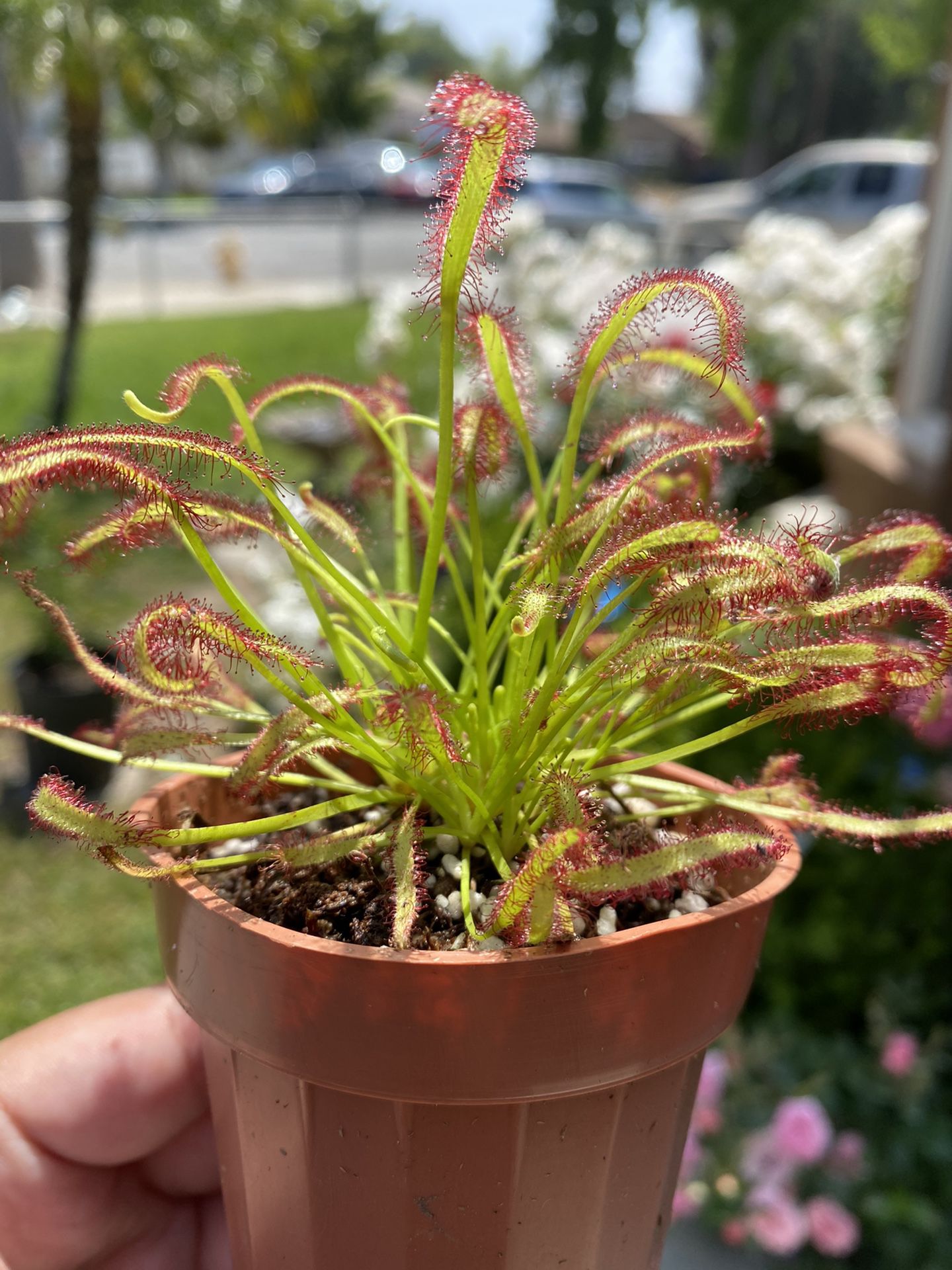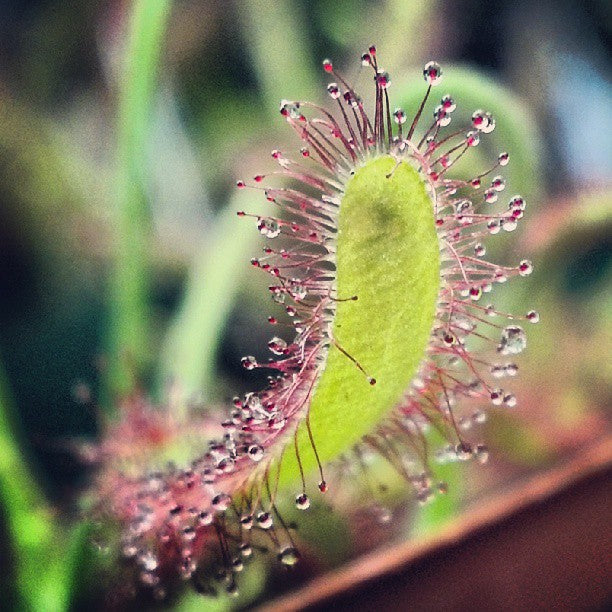



3" Drosera Capensis (Cape Sundew)
*Drosera capensis*, commonly known as Cape Sundew, is a carnivorous plant native to South Africa. It's named for its sticky tentacle-like leaves that attract, trap, and digest insects. Here are care instructions for *Drosera capensis*:
1. Light: Cape Sundews thrive in bright, indirect light. They can tolerate some direct sunlight, especially in the morning or filtered sunlight throughout the day. Indoors, place them near a south or west-facing window where they can receive several hours of sunlight daily.
2. Watering: Keep the soil consistently moist, but avoid waterlogging. Use distilled water, rainwater, or purified water to prevent mineral buildup, as *Drosera capensis* is sensitive to salts and minerals. Water from below by placing the pot in a tray of water and allowing the soil to absorb moisture from the bottom. Never let the plant sit in water.
3. Humidity: Cape Sundews thrive in high humidity. You can increase humidity by placing the pot on a humidity tray filled with water and pebbles or by using a room humidifier. Misting the plant occasionally can also help maintain humidity.
4. Soi: Use a soil mix that is low in nutrients and holds moisture well. A mix of sphagnum moss and perlite or a peat-based carnivorous plant mix works best. Avoid using regular potting soil, as it is too nutrient-rich and can harm the plant.
5. Feeding: *Drosera capensis* catches insects with its sticky tentacles. While they can survive on a diet of captured insects, you can supplement their diet with small insects like fruit flies, pinhead crickets, or ants. Avoid feeding them meat, dairy, or anything that can rot.
6. Temperature: Cape Sundews prefer temperatures between 65-80°F (18-27°C) during the day and slightly cooler at night. Protect them from drafts and sudden temperature fluctuations, especially during winter.
7. Dormancy: In their native habitat, *Drosera capensis* experiences a dormant period during the cooler, drier months. Mimic this dormancy by reducing watering and maintaining cooler temperatures (around 50-60°F or 10-15°C) for 2-3 months in winter. Growth typically resumes in spring.
8. Potting: Repot Cape Sundews as needed to refresh the soil or accommodate growth. Use a shallow pot with drainage holes to prevent waterlogging.
9. Pests: While Cape Sundews are carnivorous and trap insects, they can still be susceptible to pests like aphids or spider mites. Inspect regularly and treat infestations with insecticidal soap or neem oil.
By following these care instructions, you can cultivate a healthy and thriving *Drosera capensis* (Cape Sundew) in your home or garden. Its unique carnivorous nature makes it a fascinating addition to any plant collection, providing both beauty and function.
3" Drosera Capensis (Cape Sundew)
- Related products
- Recently viewed


